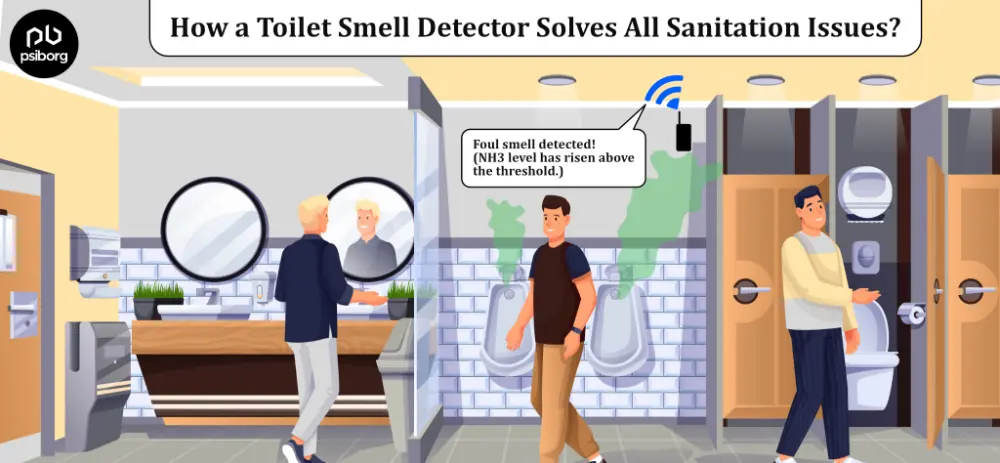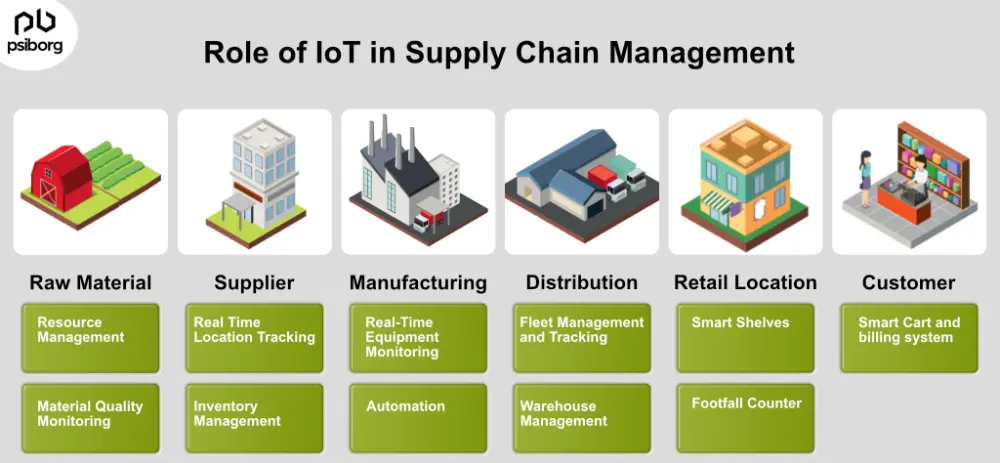If you are in the Internet of Things field, you must have heard of the word MQTT Protocol. This MQTT protocol technology has been around for more than 20 years. Let’s dive deep into MQTT protocols and reasons to choose MQTT for IoT.
When the MQTT protocol was invented in 1999, its creators probably didn’t realize the far-flung applications it would have across all industries.
Simply put, MQTT is one of the most popular messaging protocols and is frequently used in communication networks of different types. IoT is the most popular application field for the MQTT protocol. And how come anything is related to IoT and we don’t talk about it?
In this article, we will give insight into MQTT, its features, and the reasons why you should choose MQTT for IoT.
First things first,
WHAT IS MQTT PROTOCOL?
MQTT stands for “Message Queuing Telemetry Transport.” It is a standard messaging protocol best suited for the Internet of Things (IoT).
Initially, MQTT was used to develop connections throughout a satellite-based network. The lightweight protocol is needed for low bandwidth and power consumption. MQTT is an open protocol and has a set of ready-made libraries for C/C++, Java, JavaScript, Python, and some other programming languages.
The resource accuracy of MQTT plays an important role in the system, working through the costly satellite link. Afterward, MQTT has come in handy with more accessible and low-end communication channels and has various application areas, like the Internet of Things.
HOW DOES THE MQTT PROTOCOL WORK?
So, the MQTT protocol uses a publish-subscribe model and includes a server, a publisher, and a subscriber.
Now, to understand how MQTT works, you first have to be clear about these terms. So, let’s understand these terms first.
A server/broker communicates with the client (Publisher/subscriber) through an internet connection or through a local network.
A publisher creates messages and publishes them on a specific topic.
The subscriber receives messages relevant to the topic to which it’s subscribed.
The publisher and subscribers can swap roles, and it is also possible that the MQTT client takes on both roles. The number of publishers and subscribers can be unlimited. All the clients will have unique IDs through which the server will identify them.
Each topic will have different subtopics, which form a hierarchy. If the message is published under the same subtopic, the publisher can easily reach the intended receiver, who has subscribed to the same topic levels.
DATA TRANSMISSION IN MQTT
Similar to other binary protocols, MQTT outweighs text protocols in machine-to-machine communication. Devices can send and receive binary data without any extra processing, which speeds up messaging within the network.
Moreover, the MQTT sends the messages in “packets.” A packet consists of:
- A Fixed Header, it is a much-needed part of the message and consists of a control header and packet size. The minimum packet size is 2 bytes, and it can go up to 5 bytes.
- A Variable header can be considered an optional part of the message as it provides additional information. Its size can vary based on the message type.
- Payload—this is also an optional part of the message that provides additional information. The size of the payload can differ based on the message type.
So, the MQTT message structure includes a fixed header with a packet size of 2 to 5 bytes, a variable header, and a payload.
MQTT is a scalable solution, is simple to use, and has high compatibility with internet-connected applications. This is the reason why it is so popular in the IoT.
For instance: consider using the MQTT protocol in home automation, one of the IoT projects. If you are making your project using MQTT, it will include 4 stages-
- Connection
- Authentication
- Communication
- Termination
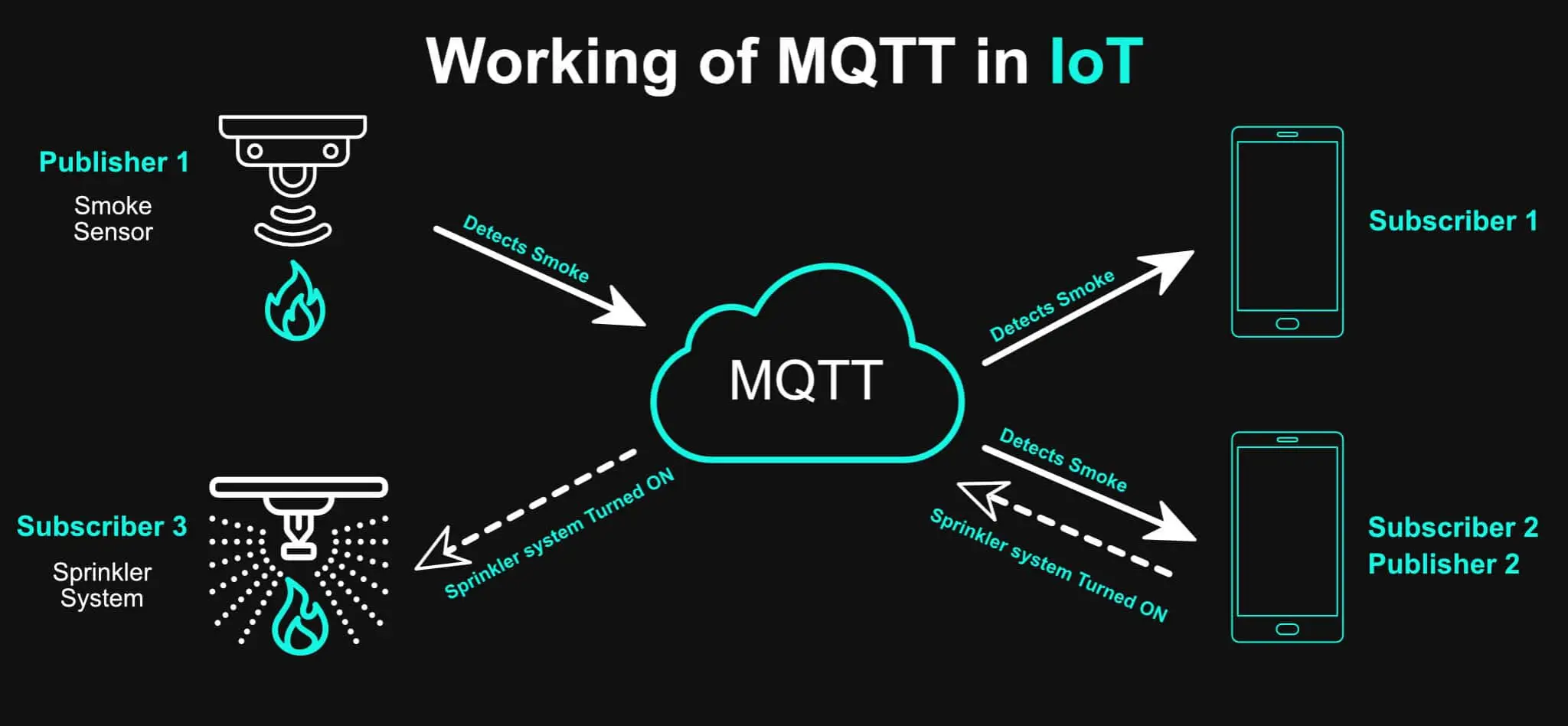
In the connection stage, the client will start by creating a TCP/IP connection to the broker by using a standard port or a customized port stated by the broker’s operators.
The second stage is authentication, which offers application-level security. To authenticate the client to the server, you can use TLS (transport layer security). On the application level, the MQTT protocol allows a username and a password for authentication.
In the communication phase, the client can publish, subscribe/unsubscribe, and ping. Generally, the messages will have payloads. Now, it is up to the developer to define payloads as binary data, plain text, JSON, XML, or something else.
When the publisher/subscriber wishes to terminate the MQTT session, it will send a “DISCONNECT” message to the broker and end the connection. It is also called a graceful shutdown.
WHY IS THE MQTT PROTOCOL EXTENSIVELY USED IN IOT?
Simply put, IoT is all about making various devices smarter by connecting them to the internet and to cloud services. MQTT fits well into this concept. It is a user-friendly protocol with a fast response time. It makes for efficient interaction between the devices, no matter how many there are.
MQTT ensures smooth data transfer with less bandwidth and also reduces the load on the CPU and RAM.
We use MQTT as an energy-efficient communication protocol in a customized GPS tracking solution.
Quality of Service (QoS)
Further, MQTT ensures reliability by adding three distinct flags. This is referred to as quality of Service (QoS). The three possible flags are-
- QOS 0: At this level, there is no guarantee of delivery. Neither does the recipient acknowledge receiving the message nor does the sender store and re-transmit it. This requires the least amount of network traffic.
- QOS 1: This level makes sure that the recipient receives the message at least once. The sender stores the message until it does not receive an acknowledgment from the recipient. There is a possibility that duplicate messages are also received by the recipient.
- QOS 2: This is the highest level of service in MQTT. At this level, it is guaranteed that each message is received only once. This level is the safest and slowest and is suitable for critical scenarios that require a message to be guaranteed to be delivered and not duplicated.
Moreover, the open-source MQTT libraries and public brokers lessen the development cost and speed up the development process. Thus, making MQTT a commonly used protocol in the IoT industry.
But that doesn’t mean MQTT is the only player in the market. There are many alternatives to MQTT, but what makes MQTT superior among them all? Let’s find out.
MQTT ALTERNATIVES & THEIR COMPARISON
Effortless, smooth communication is one of the main aspects of an IoT system, and this can only be achieved through a proper communication protocol. It can be a good choice to choose MQTT for an IoT system, but to be assured, let’s check the other alternatives as well.
1. HTTP VS MQTT
HTTP is from the year 1989. It’s an open standard and was first established by the IETF and W3C in 1997. It makes use of TCP/IP as a transport protocol. HTTP is a web protocol and is more often used with HTML to communicate with the web browser.
HTTP, the Hypertext Transfer Protocol, follows a request/response model and uses URL/URI as message topics.
So, a client will send a request to a server, and in turn, the server will send back the response.
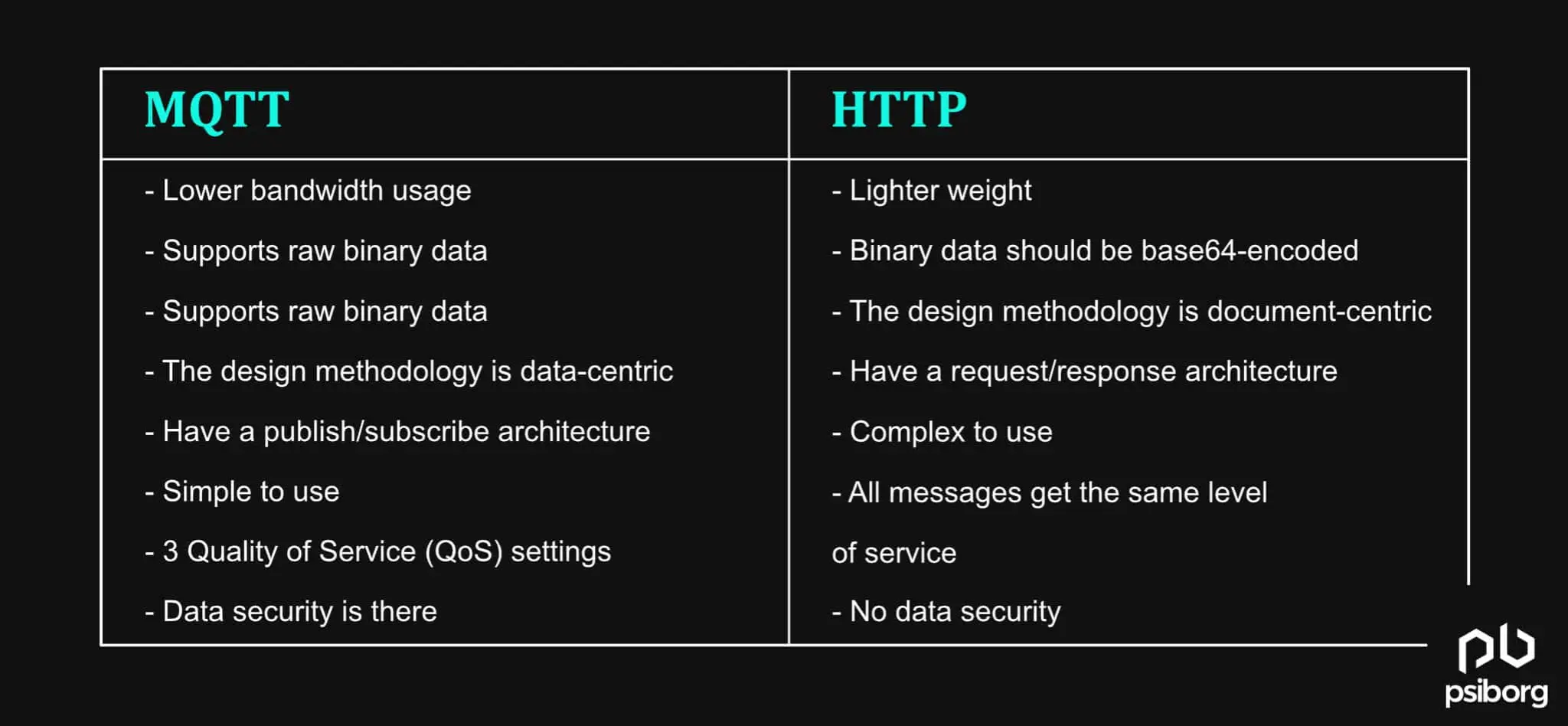
Looking at the above table, it is clear that MQTT is better than HTTP for IoT. it has the ability to maintain connection pools, enabling bidirectional communication for many devices connected by a single entity.
2. COAP VS MQTT
CoAP is a Constrained Application protocol that was developed by the IETF and is a UDP-based protocol. It is pretty similar to HTTP.
CoAP is a binary protocol, and it supports two modes of communication: publish/subscribe and request/response. Similar to HTTP, it also publishes messages to URIs.
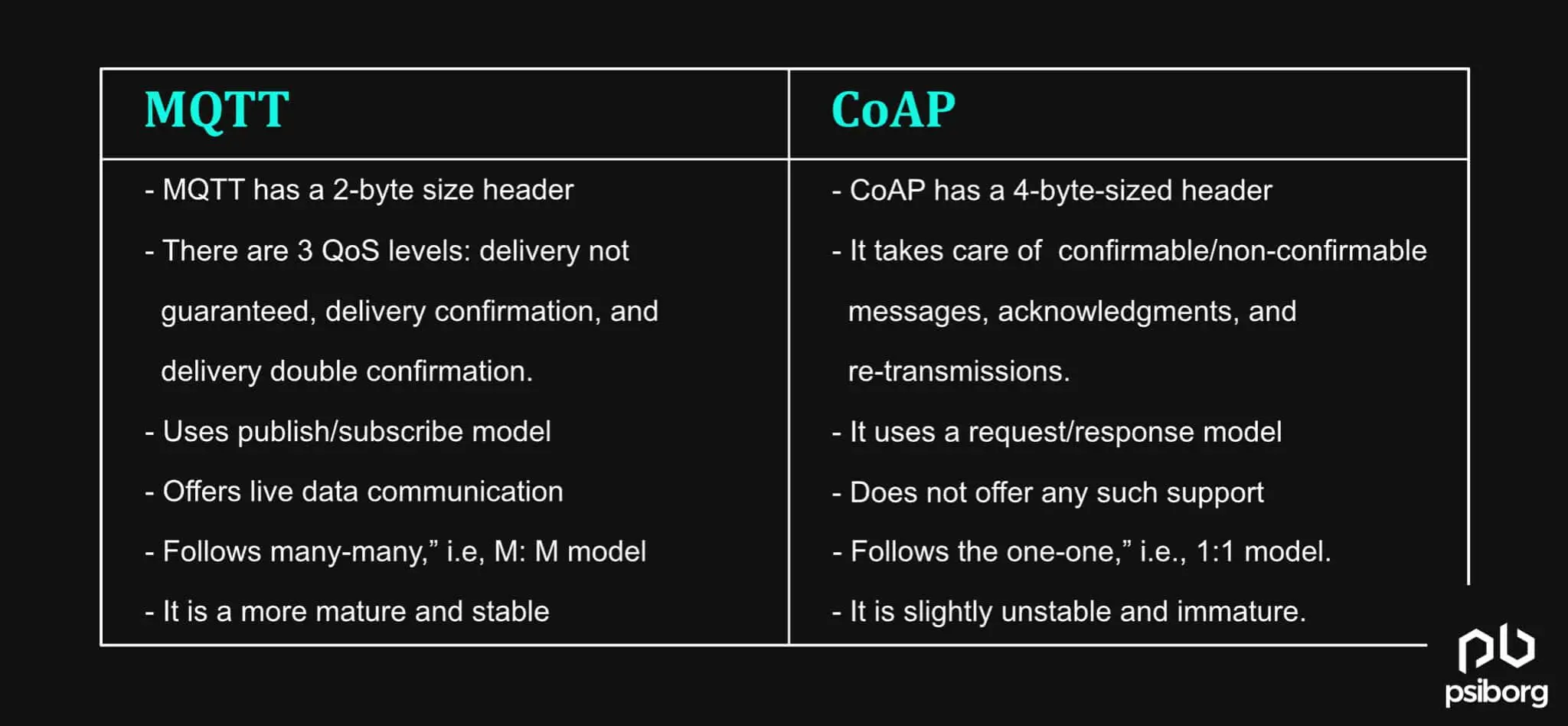
CoAP was developed for constrained devices, it has a small message size, and the use of UDP makes it a simple transport protocol. In this aspect, CoAP has the upper hand over MQTT. However, the lightweight architecture and low message size of MQTT still make it more reliable than CoAP.
3. AMQP VS MQTT
AMQP, the Advanced Message Queuing Protocol, was developed by JPMorgan Chase & Co. in 2003 as an open messaging protocol for banking systems.
In AMQP, the exchange component of the protocol gets a ping from the publisher and routes it to a queue. The queue stores the message until the user can process it.
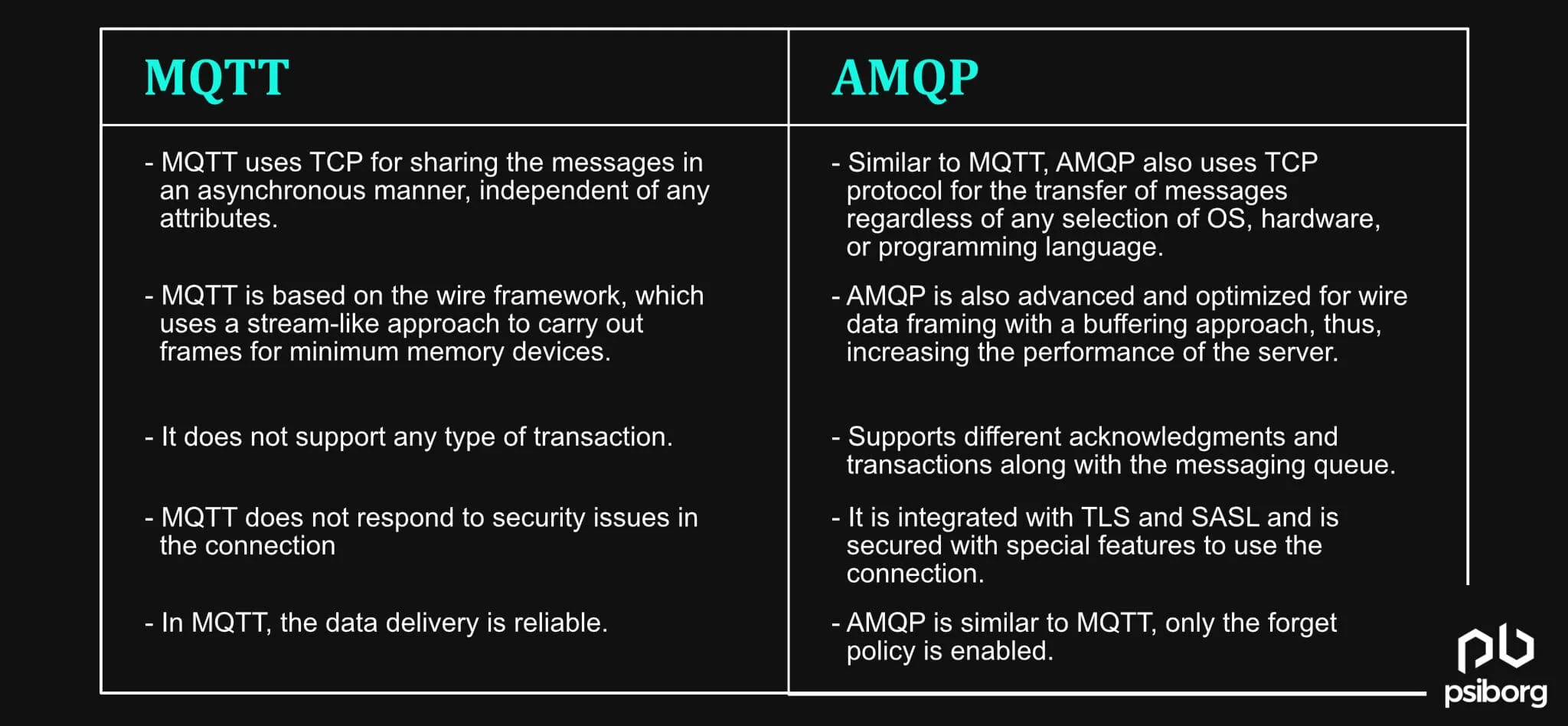
Although AMQP is more capable than MQTT for general-purpose message queuing. However, AMQP was not targeted at IoT solutions.
THE FUTURE OF MQTT IN IOT AND WHY TO CHOOSE MQTT FOR IOT
As per Google trends, users’ interest in MQTT has skyrocketed; it has quadrupled all around the world in the last 5–6 years.
This drift is also supported by the over-speedy expansion of the IoT market and a constant tendency towards resource efficiency.
Uncomplicated architecture, simple implementation, authentic message delivery, and high scalability are some of the benefits that will keep users interested in MQTT for IoT.
To sum up, MQTT is a good competitor in the world of data transfer and network communication.
It’s not like it’s number one at all points, like AMQP has the upper hand in security and CoAP outperforms at some point.
The essence is that there are several key benefits that MQTT offers, such as reliability, fast response time, the capability to support unlimited devices, publishing messaging that is perfect for many-to-many communication, and a strong MQTT community.
This all makes MQTT the best option for IoT devices. We at PsiBorg use MQTT as a protocol stack for our IoT solution development.
It is our go-to choice for low-power wireless devices with fluctuating connections.
This is all about MQTT and why we should choose it for IoT.
If you are interested in using MQTT in your dream IoT project, connect with us; we would love to help you out.



